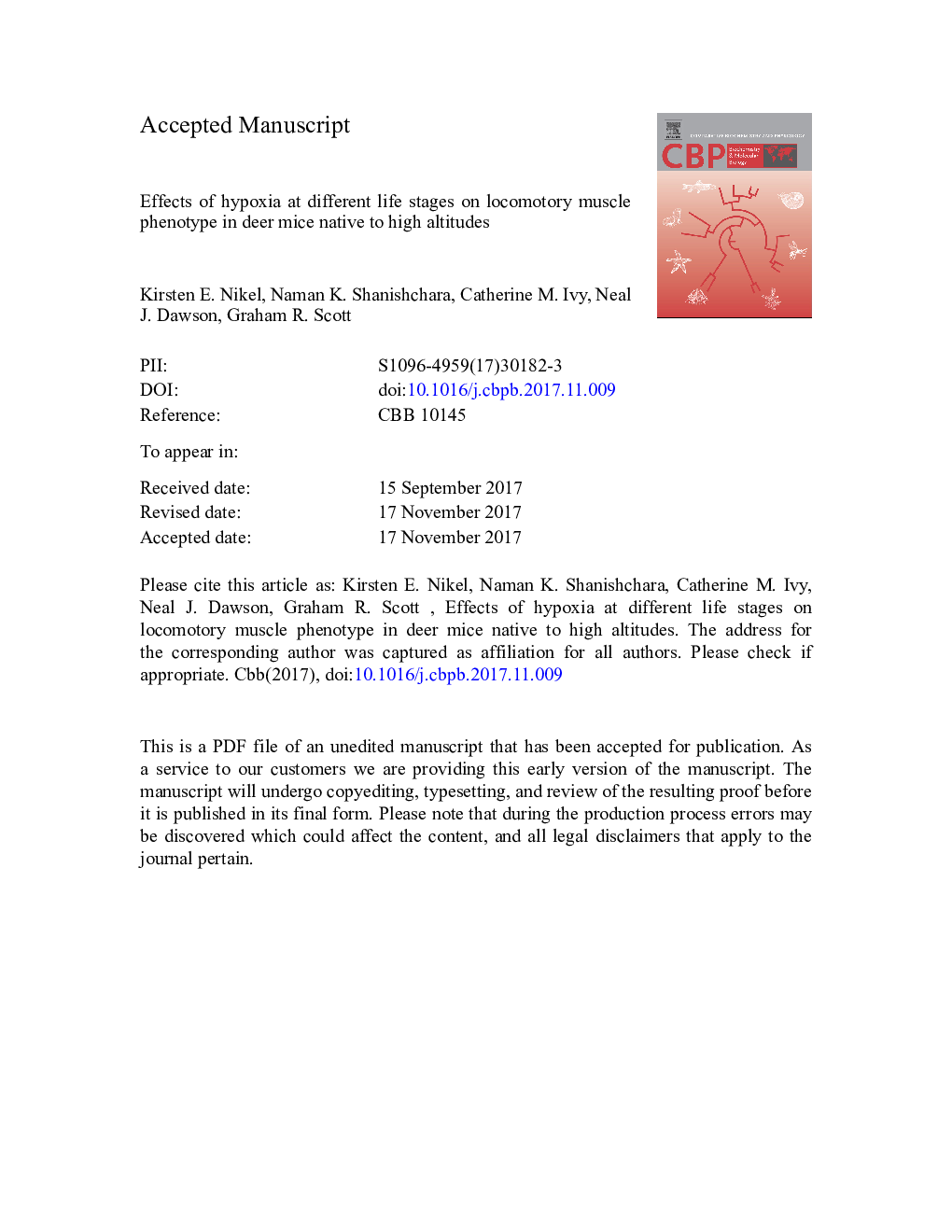| کد مقاله | کد نشریه | سال انتشار | مقاله انگلیسی | نسخه تمام متن |
|---|---|---|---|---|
| 8318781 | 1539113 | 2018 | 24 صفحه PDF | دانلود رایگان |
عنوان انگلیسی مقاله ISI
Effects of hypoxia at different life stages on locomotory muscle phenotype in deer mice native to high altitudes
ترجمه فارسی عنوان
اثر هیپوکسیا در مراحل مختلف زندگی بر روی فنوتیپ عضله حرکتی در موش های گوزن بومی به ارتفاع بالا
دانلود مقاله + سفارش ترجمه
دانلود مقاله ISI انگلیسی
رایگان برای ایرانیان
کلمات کلیدی
انعطاف پذیری رشد، فیزیولوژی تکاملی، اقتباس ارتفاع بالا، اثرات پدر و مادر، عضله اسکلتی،
موضوعات مرتبط
علوم زیستی و بیوفناوری
بیوشیمی، ژنتیک و زیست شناسی مولکولی
زیست شیمی
چکیده انگلیسی
Animals native to high altitude must overcome the constraining effects of hypoxia on tissue O2 supply to support routine metabolism, thermoregulation in the cold, and exercise. Deer mice (Peromyscus maniculatus) native to high altitude have evolved an enhanced aerobic capacity in hypoxia, along with increased capillarity and oxidative capacity of locomotory muscle. Here, we examined whether exposure to chronic hypoxia during development or adulthood affects muscle phenotype. Deer mice from a highland population were bred in captivity at sea level, and exposed to normoxia or one of four treatments of hypobaric hypoxia (12Â kPa O2, simulating hypoxia at ~Â 4300Â m): adult hypoxia (6-8Â weeks), post-natal hypoxia (birth to adulthood), pre-natal hypoxia (before conception to adulthood), and parental hypoxia (in which mice were conceived and raised in normoxia, but their parents were previously exposed to hypoxia). Litter size was similar across treatments, and pups survived the hypoxia exposures and grew to similar body masses at ~Â 6-8Â months of age. Hypoxia had no effect on the masses of gastrocnemius and soleus muscles. There was a strong concordance between two distinct histological methods for staining capillaries in the gastrocnemius - alkaline phosphatase activity and binding of Griffonia simplicifolia lectin I - each of which showed that capillarity and muscle fibre size were largely unaffected by hypoxia. Maximal activities of several metabolic enzymes (cytochrome c oxidase, citrate synthase, isocitrate dehydrogenase, and lactate dehydrogenase) in the gastrocnemius were also largely unaffected by hypoxia. Therefore, the evolved muscle phenotype of high-altitude deer mice is relatively insensitive to hypoxia across life stages.
ناشر
Database: Elsevier - ScienceDirect (ساینس دایرکت)
Journal: Comparative Biochemistry and Physiology Part B: Biochemistry and Molecular Biology - Volume 224, October 2018, Pages 98-104
Journal: Comparative Biochemistry and Physiology Part B: Biochemistry and Molecular Biology - Volume 224, October 2018, Pages 98-104
نویسندگان
Kirsten E. Nikel, Naman K. Shanishchara, Catherine M. Ivy, Neal J. Dawson, Graham R. Scott,
